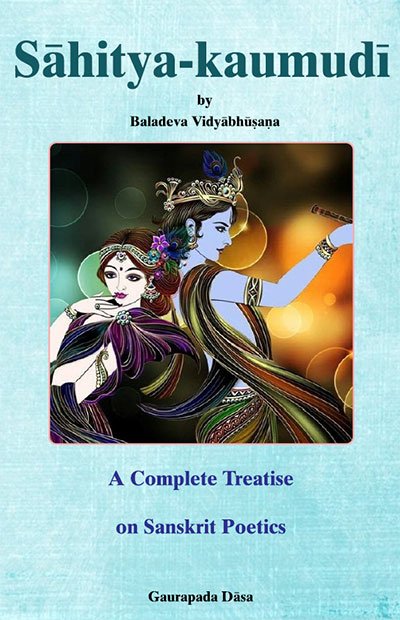Sahitya-kaumudi by Baladeva Vidyabhushana
by Gaurapada Dāsa | 2015 | 234,703 words
Baladeva Vidyabhusana’s Sahitya-kaumudi covers all aspects of poetical theory except the topic of dramaturgy. All the definitions of poetical concepts are taken from Mammata’s Kavya-prakasha, the most authoritative work on Sanskrit poetical rhetoric. Baladeva Vidyabhushana added the eleventh chapter, where he expounds additional ornaments from Visv...
Text 2.21
तद् एषा कथिता त्रिधा ॥ २.१३d ॥
tad eṣā kathitā tridhā ||2.13d ||
tat—therefore; eṣā—this one (Indication); kathitā—is said; tridhā—threefold.
Therefore Indication has three broad categories..
avyaṅgyā gūḍha-vyaṅgyāgūḍha-vyaṅgyā ceti lakṣaṇā nāma vṛttis tridhā.
The rhetorical function called Indication has three categories: avyaṅgyā (without an implied sense), gūḍha-vyaṅgyā (with a subtle implied sense), and agūḍha-vyaṅgyā (with an unsubtle implied sense).
Commentary:
Conventional figurative usage has no implied sense and thus is one kind (avyaṅgyā), and purposeful figurative usage has two varieties (gūḍha-vyaṅgyā and agūḍha-vyaṅgyā). A suggestive conventional figurative usage can occur, as in “India loves Kṛṣṇa”, yet the implied sense is not poetical.
